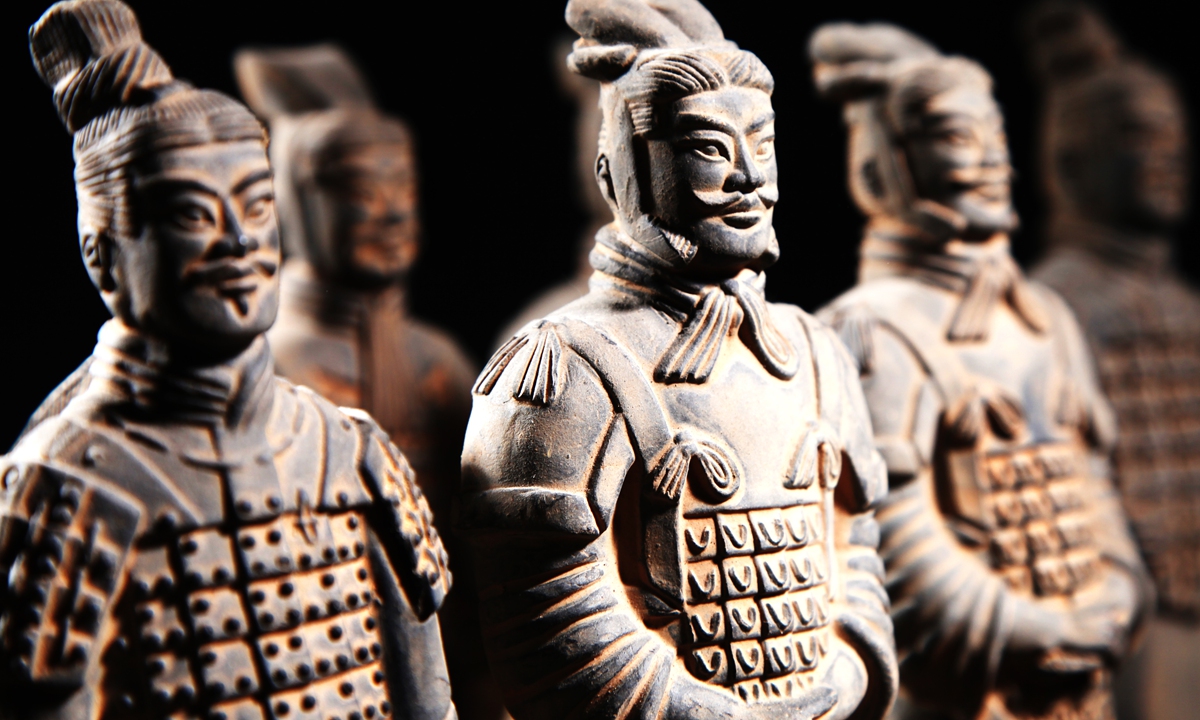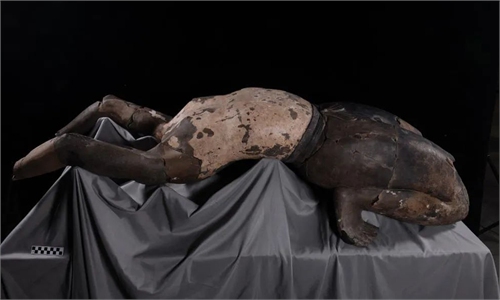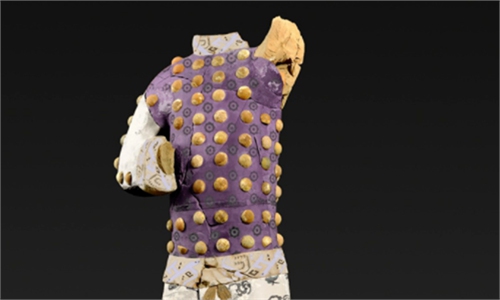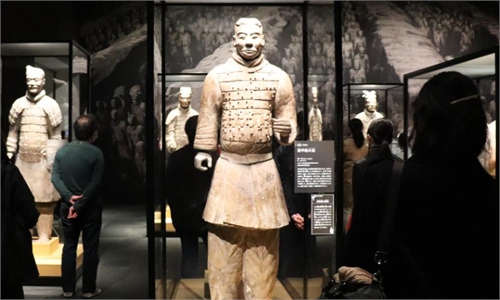ARTS / CULTURE & LEISURE
Latest discovery: More than 220 ancient Terracotta Warriors unearthed

A Terracotta Warrior Terracotta Warriors A statue of a Tang maid The Great Mosque The ancient city gate tower of Xi'an Photos: VCG
The Emperor Qinshihuang's Mausoleum Site Museum on Thursday published the latest significant discoveries found in the No.1 pit of the mausoleum during the third excavation, including rules for the formations of Terracotta Warriors army, ruins in the tunnel adjacent to the pit and the process used to assemble the warriors.
The third excavation of No.1 pit began in 2009, covering an area of about 430 square meters. More than 220 terracotta figures, 16 terracotta horses, four chariots and other cultural relics such as weapons and production tools have been identified to date, according to the museum.
Shen Maosheng, a museum researcher, told media that besides unearthing these cultural relics, the excavation has made some significant breakthroughs.
Through the excavation, Chinese researchers have established the types and arrangement of weapons used by the Terracotta Warriors as well as the formations and patterns of the mysterious underground army.
Shen said that the excavation also clarified how the figurines were assembled, explaining that after the terracotta figures were sculpted, detailed decorations were applied before the arms were glued together.
Another breakthrough was the discovery of some ruins in the tunnel of the pit, which points to someone digging up the tunnel to enter the pit. Researchers speculate that it may be individuals who joined in building the pit and were familiar with the structure, thepaper.cn reported.
Researchers connected them with soldiers of Qin Dynasty (221BC-206BC) who surrendered to Xiang Yu, a noble of the Chu state and rebelled against the Qin Dynasty and became a prominent warlord. Researchers now believe that these people must have attempted to destroy the mausoleum and the pit of the Terracotta Warriors if they had been ordered to do so by Xiang. Therefore, the discovery in the tunnel provides strong evidence that Xiang had tried to destroy the mausoleum.
Zhang Ying, an expert specializing in Qin and Han Dynasty archaeology, told the Global Times on Thursday that it is a "bold but reasonable" assumption to make that the tunnel was created by Qin soldiers who had surrendered to Xiang.
"Due to the fact that the tunnel was excavated without obvious signs of damage, it is obvious that the people who dug it were familiar with the structure of the Terracotta Warriors pit, and were likely those who participated in the construction of the Mausoleum of the First Emperor of Qin."




